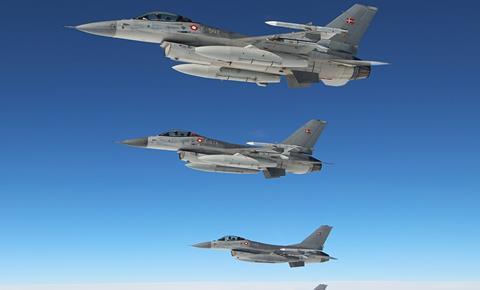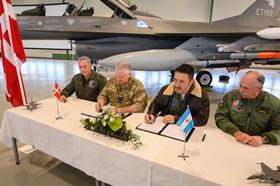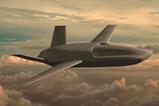Arms regulators in Washington have approved a weapons and support package valued at nearly $1 billion meant to help Argentina stand-up its planned fleet of used Lockheed Martin F-16 fighters.
The US Department of State on 30 October said it signed off on a request from Buenos Aires to purchase $941 million worth of guided missiles, bombs, countermeasures and communications equipment from American manufacturers to outfit Argentina’s planned fleet of 24 F-16A/B fighters.
Those ageing jets are being purchased used from Denmark under a deal signed in April and reportedly worth $40 million. Copenhagen turned over the first example at the time of that ceremony, which included Argentine defence minister Luis Petri arriving in the back seat of an F-16B, complete with the blue-and-white roundel of the Argentine air force.

The American package to support that fleet also includes spare parts, aircraft sustainment services and aerial refuelling services to support the jets during their transit from Europe to South America.
“The proposed sale will improve Argentina’s capability to meet current and future threats by providing the additional capacity to conduct air defence, offensive counter-air and close-air-support operations,” the state department review says.
Similar approval was required for the fighter sale between Denmark and Argentina, as the F-16s were made in the USA by an American firm. The state department and US Congress gave that consent in 2023.

Among the requested armaments are 36 Raytheon AIM-120C-8 Advanced Medium Range Air-to-Air Missiles, 102 Mk-82 226kg (500lb) general purpose bombs and 50 Raytheon GBU-12 Paveway II laser-guided bombs. Encrypted radios, Link 16 data communication systems, and chaff and flares are included.
In approving the sale of fighter weapons and support, Washington described Argentina as a “major non-NATO ally that is a force for political stability and economic progress in South America”.
That position is a relatively new stance for the USA, one resulting from Argentine president Javier Milei’s recent turn away from the authoritarian bloc of Russia and China, and toward the US-led West. Milei took office in December 2023 and earlier this year requested formal status for Argentina as a NATO global partner.
Argentina has for decades pursued a renewal its fighter capability, which was decimated by the country’s defeat at the hands of the UK in the 1982 Falklands War.
Export restrictions imposed by London after the war prevented any UK-made military components from going to Argentina, in particular Martin-Baker fighter aircraft ejection seats.
Buenos Aires has sought replacements for the 16 Dassault Mirage III fighters it retired in 2015, including new Mirages, Swedish Saab Gripens, Israel Aircraft Industries Kfirs and Korea Aerospace Industries FA-50 light fighters – all of which were blocked by diplomatic pressure from London.
That opened the door for China to pitch Argentina on acquiring single-engined JF-17 fighters – a joint product of China’s Chengdu Aircraft Corporation and the Pakistan Aeronautical Complex.
That was apparently too much for Washington, which in 2022 began working to broker a deal for the used F-16s. A 2018 policy change in London opened space for sales to Argentina of weapons judged “not detrimental to the UK’s defence and security interests”, according to the foreign office.
Denmark was already in the process of modernising its fighter fleet with new Lockheed F-35As, making its older jets available.
The remainder of the Danish F-16A/Bs are being donated to Ukraine.
The F-16 acquisition will be a move toward parity in South America, where Argentina’s regional neighbours far outclass its air combat capability.
Chile operates 35 F-16s, according to Cirium fleets data, while Brazil is in the process of fielding Saab’s latest Gripen E/F fighter – including examples produced under license in Brazil by Embraer – with plans for at least 36 aircraft.































